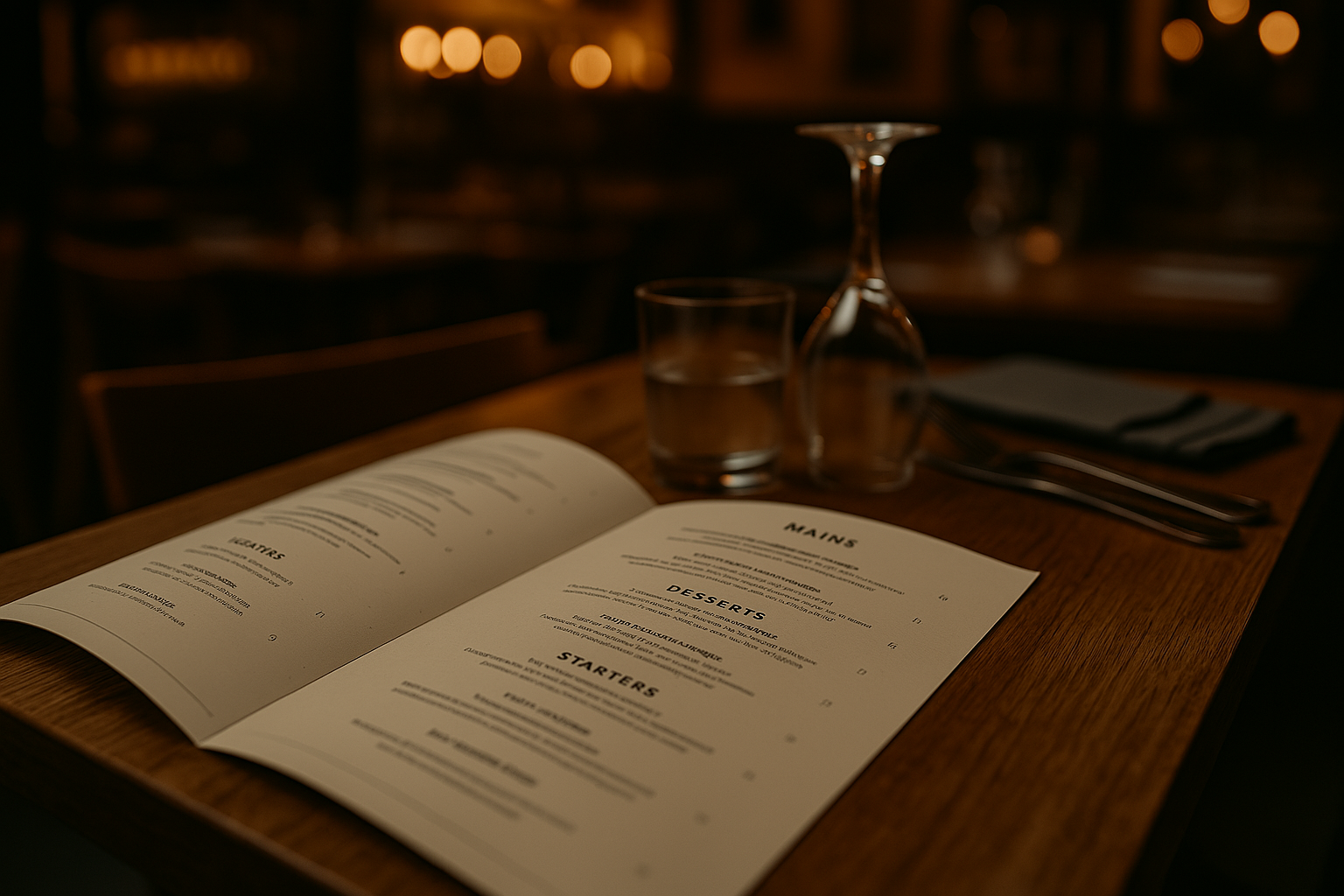
Your Menu Is More Than a List. It's a Strategy
Most operators fail to recognise the potential that lies in their menu.
They treat it like a list of offerings instead of what it actually is: a strategic instrument. Your menu controls margin, perception, pace, and upsell opportunity before a thing is even placed on the plate.
When properly designed, it is the highest-leverage tool in the building. When not so designed, it quietly generates financial losses.

The Root Problem
The typical restaurateur invests much time in ingredient management, customer service, and staff. The menu, nonetheless, tends to be created on speculation, replicated models, or outdated templates that no longer represent the business.
Here’s the truth: a poorly engineered menu doesn’t just confuse guests. It hurts kitchen flow, clutters decisions, and kills profit potential. This isn’t a design problem. It’s a business one.
What Real Menu Engineering Entails
This Core Principle is not interested in fashionable typefaces or complex dish descriptions. It's about organizing your menu to optimize performance.
Here’s the foundation:
-
Stars
High popularity, high margin. Promote them. Highlight them. Make them visible.
-
Puzzles
High margin, low popularity. Improve the name. Change the placement. Make them feel desirable.
-
Plow Horses
Well-liked but low margin. Reduce cost or size. Package them with more intelligent sides or beverages.
-
Dogs
Low interest and low profitability. If they do not serve a particular purpose, their removal is necessary.
Everything has a specific purpose.
Classify each dish using your sales data as one of these four roles.
This single step has the potential to eliminate unnecessary burdens and redirect efforts toward best practices.
Your Menu Structure Isn't Neutral
Customer's eyes follow habits. Top right, top left, and the center of your menu are where they look the most. That's where your best items should be.
Spacing, bolding, boxes, and icons can make or break what customers will actually order. Visual clutter or lack of grouping causes decision fatigue. That's when guests resort to the familiar, not the profitable.
Pricing Psychology Affects Perceptions
Your prices don't merely express cost. They build value.
A £48 steak at the top of the list makes a £30 option seem comparatively affordable. And the presence of a third portion size may subliminally influence customers to choose the most lucrative option. And how prices are rounded or end in .95 can also influence purchasing, subject to the context.
Done correctly, these techniques improve both guest satisfaction and profitability. Done incorrectly, they train customers to think you're overpriced.

The Importance of Prioritisation
Menu design influences all aspects of the business. It impacts:
Profit margins.
Table turnover rate
Preparation consistency
Guest decision flow
Perceived brand quality
You do not need more things. You need to reap more from the things you already have. It is the first thing that we target when a restaurant is not reaching its numbers.
Current Audit Areas of Emphasis
Examine your existing menu and consider the following:
Are my top-selling items in the top-left, top-right, or the middle of the page?
Do I know my Stars, Puzzles, Plow Horses, and Dogs?
Is there something that is eroding my margins, which customers barely even notice?
Does my pricing generate value tension or confusion?
Are my seasonal offerings actually being seen, or just hanging in white space?
A complete transformation is not required to achieve improved outcomes. Rather, small strategic changes can yield big dividends.
What's Next
This article only scratches the surface of the basics. In the upcoming Menu Engineering Toolkit, you'll get:
A detailed menu audit worksheet. Visual placement templates Pricing psychology playbook Upselling prompt cards. Real-world restaurant case studies of restaurants that turned their menu into a machine Coming soon. You'll know exactly how to re-engineer your menu for higher margins and smoother operations, whether you operate a six-table café or a 200-cover bistro.
In the meantime, get the Starter Guide and start uncovering the profit gaps that most operators miss.
